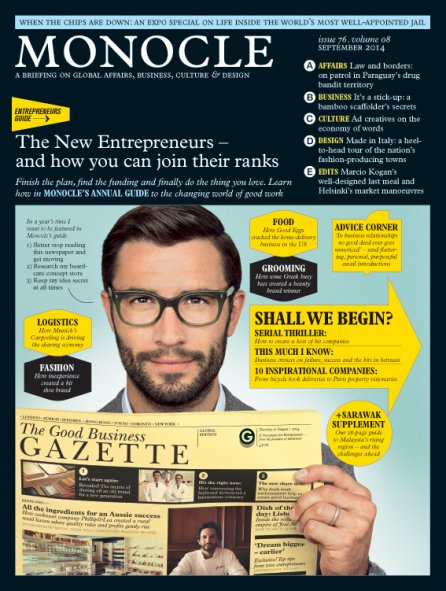 I suppose a decade of growth is long enough to sufficiently silence the critics who called him crazy.
I suppose a decade of growth is long enough to sufficiently silence the critics who called him crazy.
Tyler Brûlé launched Monocle is 2007, probably one of the most challenging times on record for a brand to launch a print magazine – and a high-end lifestyle title at that, at a time when the recession and digital marketing were poised to rock our collective worlds.
Along the way, Brûlé pulled no punches, firmly and unapologetically eschewing social media for his growing brand.
“It’s great having lots of likes and lots of followers, but you have to wonder what are they worth if suddenly Twitter started to charge every month, if Facebook started to charge,” Brûlé pondered back in 2015.
“They are free media, and I don’t think it sort of means a lot, to be honest. If you’re then promiscuous enough to jump to the next channel, how loyal are you as a consumer of brands?”
Skip ahead several months, and Brûlé’s prescience is profound. Social media for brands is increasingly pay-to-play, and publishers are having a tough time sorting it all out.
In the meantime, he’s continued to build a media brand around the success of the print magazine. Ten years on, his ideas don’t seem so crazy at all.
“In the decade since it was founded, Monocle has strived to make strategic decisions about where and when to invest in new products and initiatives, both editorially and commercially,” writes Mădălina Ciobanu in Journalism.uk. “Editorially, it launched Monocle 24, its 24-hour radio station, six years ago; it has branched out into events; and it’s just getting to the end of a [new] month-long experiment with print, the Monocle Summer Weekly.”
Long ago, he made the decision to make it “deliberately difficult” to read the magazine online, a strategic move that has worked in their favor.
“Only three articles from each issue are made available on the website each month in order to encourage people to subscribe,” Ciobanu explains. “A one-year subscription to the magazine costs £100, and includes 10 print issues of Monocle, as well as its two special print editions, The Forecast and The Escapist. Monocle currently has a circulation of 81,504 copies and counts 18,300 subscribers, with print advertising bringing in most of its revenue.”
Andrew Tuck, Monocle’s editor, is clear that their social media policy is the right one, saying he is “confident the magazine is never going to have a Snapchat team.”
“We’ve been lucky in a way that our size isn’t huge. It’s forced us to make lots of sensible decisions,” Tuck told Ciobanu. “While Snapchat might be a good tool for recruiting people, can’t play that game of investing resources in something that cannot be directly monetised, or that doesn’t bring people into the main print product.”
Their size – and their unwavering vision to how and where they will reach their audience – gives them freedom to explore new avenues, like the four-issue Summer Weekly newspaper that targeted people on holiday in Europe.
“We’re not bound by the rules of however people have done newspapers in the past, so there is a bit of cheek and a bit more humour on the page compared to what other people might do,” Tuck notes.
The one rule they are bound by is Brûlé’s adherence to his mantra: “Always, always do your own thing.”
For Monocle, that thing is founded — and grounded — in print.
